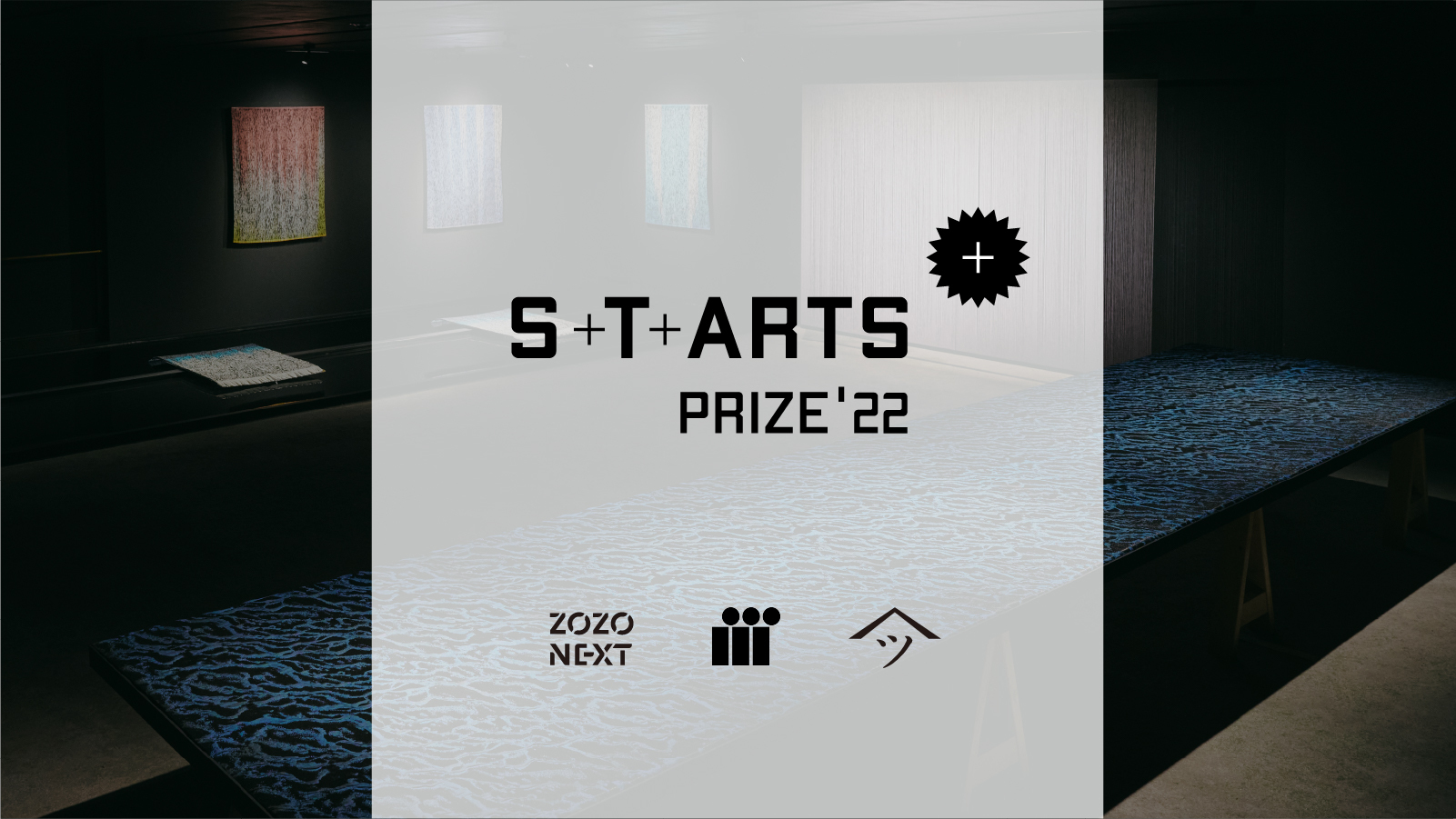ZOZO NEXT, The University of Tokyo and Hosoo's Joint Research Project "Ambient Weaving" Won the "STARTS Prize 2022" Honor Award

ZOZO NEXT, Inc. (Headquarters: Chiba City, Chiba Prefecture, Representative Director: KANAYAMA Yuki), The University of Tokyo's Graduate School of Interdisciplinary Information Studies (Headquarters: Bunkyo-ku, Tokyo, President: YAMAUCHI Yuhei), Yasuaki Kakehi Laboratory (Principal Indicator: Associate Professor KAKEHI Yasuaki), and Hosoo Co.,Ltd. (Head office: Kyoto City, Kyoto, President and CEO: HOSOO Masataka) have been awarded an Honorary Mention in the STARTS Prize 2022 sponsored by the EU Commission. This project will be exhibited at Ars Electronica, a media art festival to be held in Linz, Austria, in September.
The "STARTS Prize" is an award implemented by Ars Electronica, a world-class creative agency operating in Austria, with an appointment from the European Commission to promote practical science and technology collaborations in the field of the arts. Focusing on people and projects that contribute to mastering the social, ecological and economic challenges facing the European continent, the prize is awarded to innovative projects that cross science, technology, and art.
The smart textile "Ambient Weaving," the result of a joint research project, was selected for an Honorary Mention for its unique project team and approach that combines traditional craftsmanship and cutting-edge technology to pursue new beauty in both expression and technology.
"Ambient Weaving" is a joint research project initiated in 2020 by ZOZO NEXT, the University of Tokyo and Hosoo to develop new textiles that combine functionality and beauty by combining traditional crafts with advanced materials and interaction technologies. In this project, by crossing the structure and design of Nishijin textiles with advanced materials and devices, we have attempted to combine various functions and expressions mediated by textiles with information on the surrounding environment. In the process, we have realized the production of textiles with a new design and the development of elemental technologies that give the Nishijin brocade the ability to dynamically change its appearance and characteristics, such as a drawing foil with a temperature-responsive dye fixed in a color range that is difficult to coat using conventional dyeing processes, and a luminescent/transparency-change device so thin and flexible that it can be woven into the fabric.
"Ambient Weaving" refers to "textiles that express or incorporate environmental data" created through this initiative.
<Jury Statement>
What does it mean to be a long-established master in the field of traditional crafts? It is a bold attitude to remain on the cutting edge over time and have a willingness to undergo drastic changes. It is whether a master can also be a “meister” in value creation, incorporating the advanced technology of the times, reinventing the value it provides, and showing the future. The overwhelming beauty that is created as a result of these efforts will be a source of its timeless popularity. Nishijin brocade has a history of 1,200 years and represents the pinnacle of Japanese silk weaving. Hosoo is a long-established Nishijin textile workshop in Kyoto, founded in 1688. Hosoo has teamed up with Yasuaki Kakehi’s laboratory at the University of Tokyo and ZOZO NEXT, a startup that applies cutting-edge technology to the fashion industry. The three parties have their own strengths: Hosoo was responsible for weaving technology, the pursuit of beauty, and historical examination of cloth, while Professor Kakehi’s team was responsible for interaction design and information technology, and ZOZO NEXT was in charge of material science and business feasibility studies. The result is fabrics that change in real time as if they were breathing, interwoven with their surroundings. The fabric changes gently in response to light, temperature, humidity, carbon dioxide, and other factors in the space, enabling people to wear a natural environment. There is no technological functionality to be seen; what there is, are magnificent fabrics that emanate a solemn aura. The collaboration of all three parties was essential and led to a level of perfection that no one had ever seen before. The future of traditional crafts, which will survive the next 100 years, was beautifully demonstrated.
Click here for the original text.
https://starts-prize.aec.at/en/ambient-weaving/
<About Joint Research Project "Ambient Weaving">
Title:
Development of Smart Textiles Combining Traditional Crafts and Advanced Technology
Joint Research Partner:
Interfaculty Initiative in Information Studies, The University of Tokyo (Principal Investigator: Professor KAKEHI Yasuaki)
Hosoo Co.,Ltd. (Principal Investigator: HOSOO Masataka)